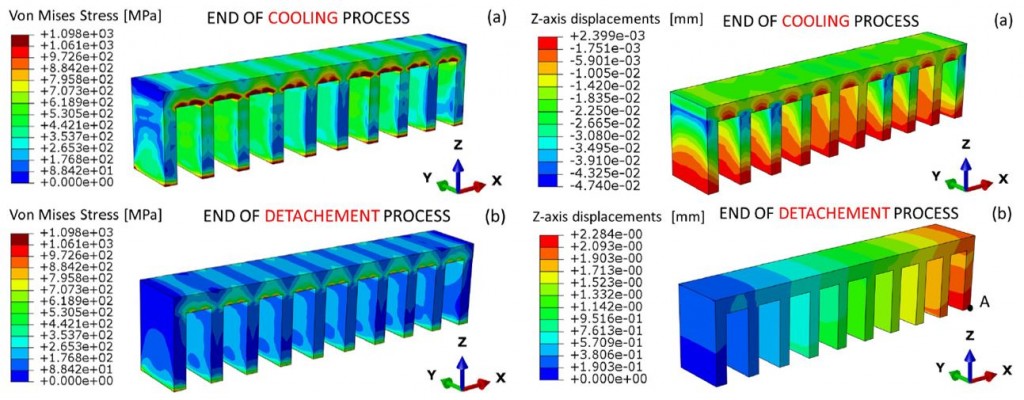Introduction
In the last years, Powder Bed Fusion (PBF) has become one of the most important additive manufacturing solutions. The simulation of PBF process has been performed in different ways, such as: Finite Elements Method (FEM), Particles Method (PM), Lattice Boltzmann Methods (LBM). In particular in FEM simulations some approximation are considered, most of all the domain is assumed as continuous and the evolution of melt pool is neglected. Nevertheless, this approach allows to predict residual stress and displacement fields on printed components, containing the computational times.
Methods
We have set up an uncoupled thermo-mechanical FEM approach based on sequential element activation. First, the thermal analysis is carried out to evaluate temperature distribution evolution when the heat source is moving on the powder bed; then the obtained temperature field is used as forcing term for the mechanical analysis. Finally residual stresses and part displacements are evaluated. Sequential element activation is used in both the analysis to simulate the powder deposition layer by layer. The heat source movements are tracked following the informations contained in the Gcode file which manages the printing process.
Some results
Simulation of a bridge-like model realized with SLM technology. In particular we show the obtained residual stresses and the displacements at the end of the cooling process and at after supports removal.

Outgoings
- Include support structures in the simulation
- Use the obtained deformed shape to modify the original cad model in order to compensate the distortions after the printing process


